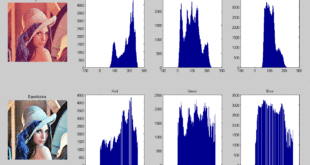By 2025, it is predicted that there can be as many as 100 billion connected IoT devices or network of everyday objects as well as sensors that will be infused with intelligence and computing capability. These devices shall comprise of personal devices such as smart watches, digital glasses and fitness monitoring products, food items, home appliances, plant control systems, equipment monitoring and maintenance sensors and industrial robots. IoT, day by day is gaining the ubiquity of Internet by integrating every object for interaction via embedded systems, making it a highly distributed network of devices communicating both ways with humans and even with devices.
While Internet of Things (IoT), built from inexpensive microsensors and microprocessors paired with tiny power supplies and wireless antennas is currently making waves, the next trend is Internet of Nano Things (IoNT) that could take medicine, energy efficiency, and many other sectors to a whole new dimension.
Nanotechnology deals with the understanding, control and manufacture of matter in the nanoscale regime, usually between 1 nm to 100 nm, and exploiting them for a useful application. The interconnection of nanosensors and nanodevices with Internet is leding to the development of next generation standard based on IoT called “Internet of Nano Things” (IoNT). The IoNT is comprised of nano scale network of nanosensors and nanodevices or their integrated functional units called nanomachines which exchange information among each other powered by Nano Communication.
The IoNT revolution is driven by minitaturization of sensors from millimeters or microns in size to the nanometer scale, emerging tools of synthetic biology that can create nanosensors by modifying single-celled organisms, such as bacteria, and emerging materials such as carbon nanotubes, that can both sense and signal, acting as wireless nanoantennas.
This new networking paradigm will have an impact in almost every industry, ranging from Telecom & IT to homeland security or environmental protection. The growth in the ageing population, coupled with high expectations for better quality of life and the changing lifestyles, has increased the demand for an improved, more efficient and affordable healthcare. The IoNT is enabling many applications like telemedicine which provides real time health data by collecting and monitoring biological data of the patients provided through wearable nano sensors.
Wireless Nano Sensor Network (WNSN) can also be applied by Military for Battlefield Monitoring, Development of Nano-Robotics and Nano-Drones, Space Based Applications, Industry Production and many more. Nanoweapon is the name given to military technology currently under development which seeks to exploit the power of nanotechnology in the modern battlefield.
The rising preponderance of IoT technology is facilitated by physical objects being linked to the Internet by various types of short-range wireless technologies such as: RFID, UWB, ZigBee, sensor networks and through location-based technologies. IoNT devices, faces challenges of the communication and power requirements of such small devices. IoNT uses two broad areas of communication, Electromagnetic Nano-Communication based on transmission and receiving of electromagnetic (EM) radiation and Molecular Communication based on information encoded in molecules.
Many IoNT devices are being researched. Graphene-based transceivers have been shown to operate at one terabit per second due to the high bandwidth, but the ancillary electronic components to make the nano-transceiver a reality are still being researched
The Internet of Nano Things market was valued at USD 6.42 billion in 2017, and is expected to reach a value of USD 22.04 billion by 2023, at a CAGR of 22.81%, during the forecast period (2018-2023), according to Mordor Report.
Just like IOT Network IoNT also offer new opportunities for hacking, identity theft, disruption, and other malicious activities affecting the people, infrastructures and economy. People such as state agencies, criminals and enterprises could use nano-robots to eavesdrop on conversations held in private. The challenges related to privacy and security issues and huge capital investment required for the development of nanotechnology is restricting the growth of the IoNT market
Some of the major players in the IoNT market are Intel Corporation, Cisco Systems Inc., Qualcomm Incorporated, Juniper Networks and IBM Corporation in U.S., Schneider Electric and Alcatel-Lucent S.A. in France, and SAP S.E. and Siemens AG in Germany among others.
References and Resources also include:
https://www.mordorintelligence.com/industry-reports/internet-of-nano-things-market
 International Defense Security & Technology Your trusted Source for News, Research and Analysis
International Defense Security & Technology Your trusted Source for News, Research and Analysis
